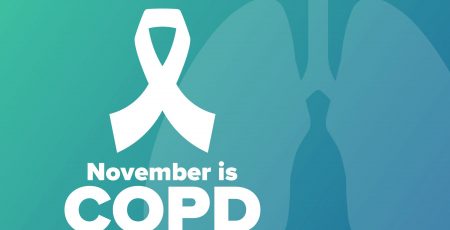23 Mar Good News: COPD Death Rate Declining As Smoking Rates Go Down
Over the last decade and a half, the overall death rate from COPD in the U.S. declined by 12%. The U.S. Centers for Disease Control and Prevention released this finding based on data collected from 2000 to 2014. The report’s co-author, Hanyu Ni, stated that the death rate decline is consistent with the nationwide drop in smoking rates for men and women during the same period.
Though the study did not cite the reasons for the decline in death rates and only reported the downward trend, Dr. David Mannino, a professor of medicine in the division of pulmonary, critical care and sleep medicine at the University of Kentucky’s College of Public Health, noted that the results are not surprising given the decline in smoking rates. Smoking is the number one cause of COPD.
According to the U.S. National Heart, Lung, and Blood Institute, most people with COPD, which includes emphysema and chronic bronchitis, currently smoke or smoked in the past. COPD, a progressive disease of the airways that makes it difficult to breathe, is the third-biggest killer in the United States.
Though the overall 12% decline in death rates was was a good sign, the numbers for various segments of the population that went into the calculation were not necessarily so promising. Men fared fare better than women in the mortality reduction: death rates among men dropped by almost 23%, while for women they dropped by only 4%.
Age differences revealed additional disparities: death rates among men between 65 and 84 dropped by almost 30%, while rates among men over 85 dropped by 23%. Meanwhile, for younger men between 45 and 64, the death rate rose by almost 13%.
Differences in death rates were noted also among women in these same age groups. Death rates dropped by 16% among those aged 65 to 84 while rates for those over 85 increased by more than 6%. For women between 45 and 64, death rates rose by 24%.
Differences between racial groups were also seen. Death rates for white women did not change significantly, but for black women, they rose by 4%. Rates for men fell 21% for whites and more than 24% for blacks.
Michelle Mielke, an associate professor and epidemiologist with the Mayo Clinic in Rochester, Minnesota, commented that these disparate death rates indicate a need to consider sex as part of individualized medicine. “Future research should continue to stratify by sex when considering [the] risk of COPD-related mortality,” she said.
Dr. Mannino, who is a former chief science officer of the CDC’s Air Pollution and Respiratory Health Branch, also suggested that additional factors unrelated to smoking history such as poverty and/or lack of access to healthcare might affect the numbers of COPD death rates between racial groups, saying that those factors “may explain some of the racial differences.”
Information for this article was obtained from RT Magazine and UPI.





No Comments